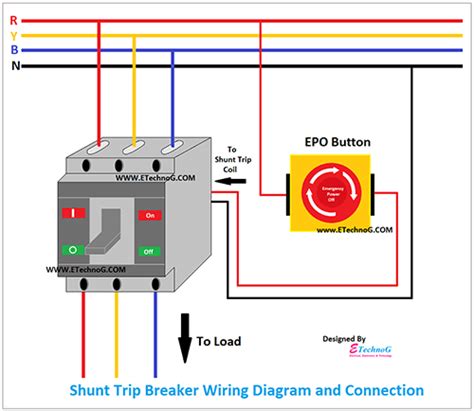How Do Shunt Trip Breakers Work
Ronan Farrow
Mar 20, 2025 · 3 min read

Table of Contents
How Do Shunt Trip Breakers Work?
Shunt trip breakers are crucial safety devices in electrical systems, offering a remote means to trip a circuit breaker. Unlike traditional breakers that rely on internal mechanisms, shunt trips utilize an external signal to initiate the tripping action. Understanding their operation is vital for ensuring electrical safety and efficient system management. This comprehensive guide delves into the inner workings of shunt trip breakers, providing a clear explanation for both novices and experienced professionals.
The Mechanism Behind Shunt Trip Operation
At the heart of a shunt trip breaker is a solenoid, an electromagnetic coil. When an electrical current flows through this coil, it generates a magnetic field. This field actuates a plunger, a small metal component connected to the breaker's tripping mechanism.
The Tripping Process: A Step-by-Step Explanation
-
Signal Transmission: A remote signal, typically a low-voltage DC signal, is sent to the shunt trip coil. This signal can originate from various sources, including control panels, protective relays, or emergency shutdown systems.
-
Solenoid Activation: The signal energizes the solenoid coil, creating a powerful magnetic field.
-
Plunger Actuation: The magnetic field draws the plunger towards the solenoid.
-
Mechanical Tripping: The plunger's movement triggers a mechanical linkage within the breaker. This linkage is designed to disengage the breaker contacts, interrupting the circuit.
-
Circuit Interruption: The rapid separation of the breaker contacts quickly stops the flow of electrical current, preventing potential damage or hazards.
Key Advantages of Shunt Trip Breakers
Shunt trip breakers offer several distinct advantages over traditional breaker systems:
-
Remote Tripping: The ability to remotely trip a circuit breaker is invaluable for enhancing safety in hazardous environments or situations requiring immediate shutdown from a safe distance.
-
Improved Safety: By eliminating the need for manual intervention in potentially dangerous situations, shunt trip breakers significantly improve worker safety.
-
System Integration: They seamlessly integrate with larger electrical systems, enabling automated responses to faults and emergencies.
-
Increased Efficiency: Automated tripping contributes to faster system response times, minimizing potential damage and downtime.
Different Types of Shunt Trip Mechanisms
While the fundamental principle remains consistent, variations exist in shunt trip mechanisms:
-
Mechanical: These utilize a purely mechanical linkage between the solenoid and the tripping mechanism. They are generally robust and reliable.
-
Electronic: More sophisticated systems incorporate electronic components for enhanced control and monitoring capabilities.
Troubleshooting Shunt Trip Breakers
When a shunt trip breaker malfunctions, several common issues may arise. These often include problems with:
-
Solenoid Coil: A faulty coil may fail to generate sufficient magnetic force to actuate the plunger.
-
Plunger Mechanism: Wear or damage to the plunger or its linkages can prevent proper tripping.
-
Wiring and Connections: Loose or faulty wiring can disrupt the signal transmission to the shunt trip coil.
-
Signal Source: Problems with the remote control system can prevent the correct signal from reaching the breaker.
Regular inspections and maintenance are crucial to prevent issues and ensure the reliable operation of shunt trip breakers.
Conclusion
Shunt trip breakers represent a critical advancement in electrical safety and control systems. Their ability to provide remote tripping capabilities significantly enhances safety, efficiency, and system reliability. By understanding their operational principles and potential challenges, engineers and technicians can effectively utilize these devices to safeguard electrical systems and personnel.
Featured Posts
Also read the following articles
| Article Title | Date |
|---|---|
| How To Test Hei Distributor | Mar 20, 2025 |
| How Do You Hook Up A Dwell Meter | Mar 20, 2025 |
| How To Unhook Gooseneck Trailer | Mar 20, 2025 |
| How Do I Find A Specific Seller On Amazon | Mar 20, 2025 |
| How Do You Get A Legal Separation In Florida | Mar 20, 2025 |
Latest Posts
Thank you for visiting our website which covers about How Do Shunt Trip Breakers Work . We hope the information provided has been useful to you. Feel free to contact us if you have any questions or need further assistance. See you next time and don't miss to bookmark.
